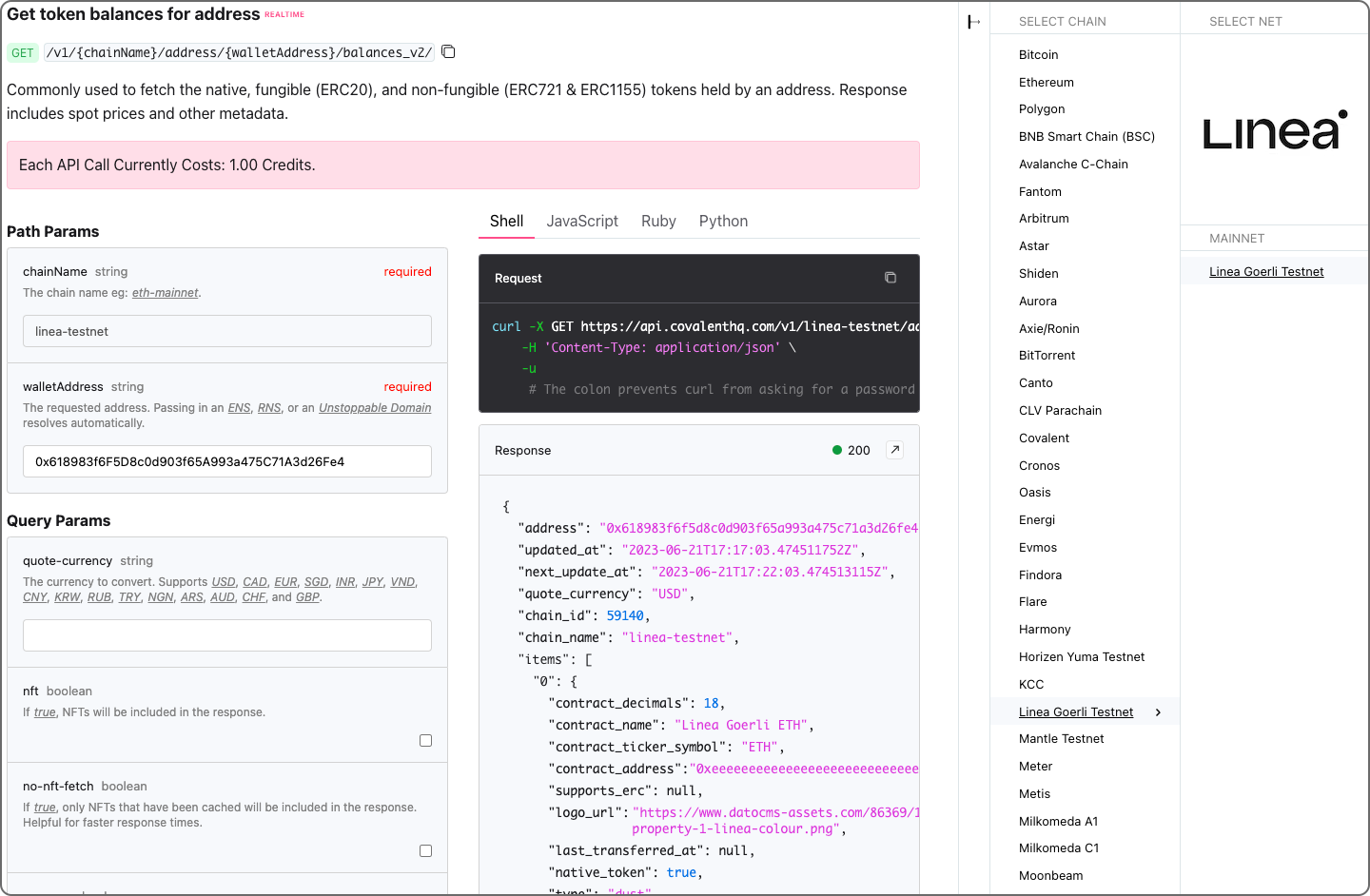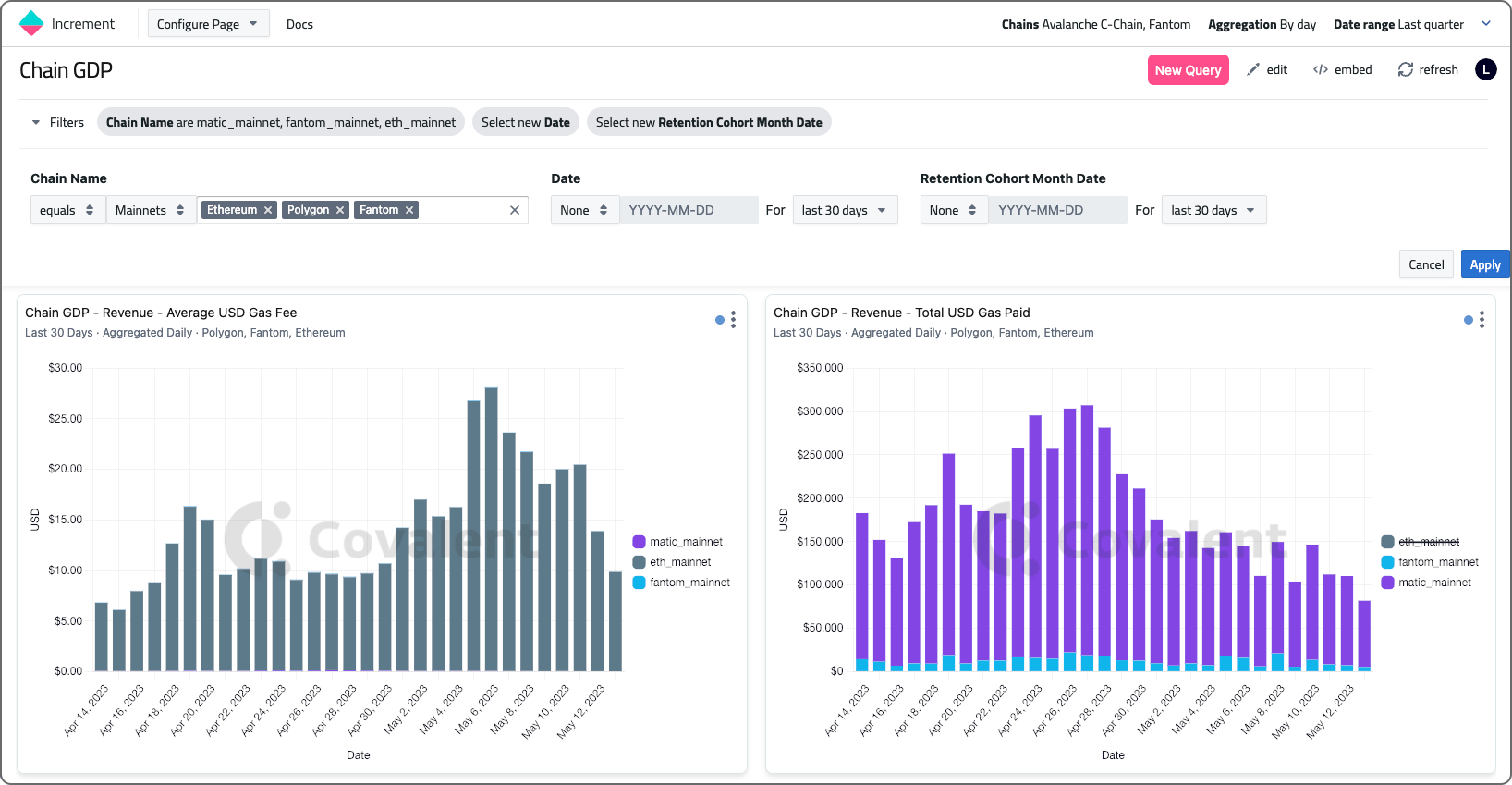Covalent Indexing and Querying API
Covalent is a hosted blockchain data solution providing access to historical and current on-chain data for 100+ supported blockchains, including Linea Goerli testnet.
Covalent maintains a full archival copy of every supported blockchain, meaning every balance, transaction, log event, and NFT asset data is available from the genesis block. This data is available via:
- Unified API - Incorporate blockchain data into your app with a familiar REST API
- Increment - Create and embed custom charts with no-code analytics
Use Covalent if you need:
- Structured and enhanced on-chain data well beyond what you get from RPC providers
- Broad and deep multi-chain data at scale
- Enterprise-grade performance
Unified API

The Covalent API is RESTful and offers the following for Linea:
| Features | |
|---|---|
| Response Formats | JSON, CSV |
| Real-Time Data Latency | 2 blocks |
| Batch Data Latency | 30 minutes |
Supported Network (chainName, chainId) | Testnet: linea-testnet, 59140 |
| API Tiers | Free tier Premium tier |
| API Categories | Balances NFTs Transactions Security Log Events & Others |
Get started
- API Key - sign up for free
- Quickstart - summary of key resources to get you building immediately on Linea
- API Reference - try all the endpoints directly from your browser
- Guides - learn how to build dapps, fetch data and extend your Web3 knowledge
Increment
Increment is a novel no-code charting and reporting tool powered by Covalent, revolutionizing how the Web3 space approaches analytics. Many analytics tools let you write SQL to create charts, but Increment is the only one to encode business logic - Reach, Retention, and Revenue - into an SQL compiler that can write valid SQL for you.
Use cases
Increment can be used for:
Get started
- Increment - login via the Covalent Platform
- Docs - learn how to use Increment to build dynamic, custom charts
- Data Models Demo - build analytics in 3 clicks
- Explore Models. Seek Alpha. - browse all data models
- Use Models. Become Alpha. - use a data model
